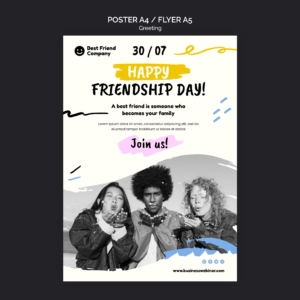Creating a poster is not as easy as it sounds. How many times have we regretted jumping straight into our software without taking the time to think? Because yes, we have understood that thinking beforehand can help to avoid certain stupidities. So, let’s explain our (great) process for creating a poster.
Determine the purpose of your poster?
First of all you have to ask yourself these questions and of course be able to answer them:
- Who is the poster aimed at? Women, men, children, individuals, professionals, etc. You need to know your target audience.
- What message for your poster / what is the purpose? This time it is about what you are going to do with it, are you presenting a new collection or is it an informative poster?
- Before you create your poster these elements need to be determined.
- The location of your display
- When? Is it a poster for the summer or winter holidays? Take the time frame into account as it can influence the design of the poster
The stages of graphic design
Paper is your best friend
What we can advise you to do is to write down your ideas on paper. But why would you tell me? To keep a written record of all your ideas that can be used sooner or later or even for a future poster design.
You can also write what you want to put on the poster: the logo, the slogan, the name or the address of the shop, etc… It’s up to you to see in relation to the objectives you have determined beforehand.
The advantage of paper is that you can make sketches, however basic they may be. Don’t hesitate to draw your poster on paper even if you don’t know how to draw, it will only help you to make a poster.
In need of inspiration?
If you don’t have any ideas, don’t panic! There are plenty of resources on the internet to find ideas. Among them you can count on the following applications:
- Dribbble
There is nothing like finding inspiration from other designers to create an advertising poster
The essentials for making a poster
- Respect your graphic charter
- Avoid using too many colours, because too many colours are not very readable.
- The best thing to do would be to limit yourself to 2 or 3 maximum
- In the same way, you can limit the typefaces to 2 or 3 maximum
- Think about the hierarchy of information
- Don’t overload your poster
And above all, remember that a personalised poster must be clear and precise. So think about this when creating your poster.


